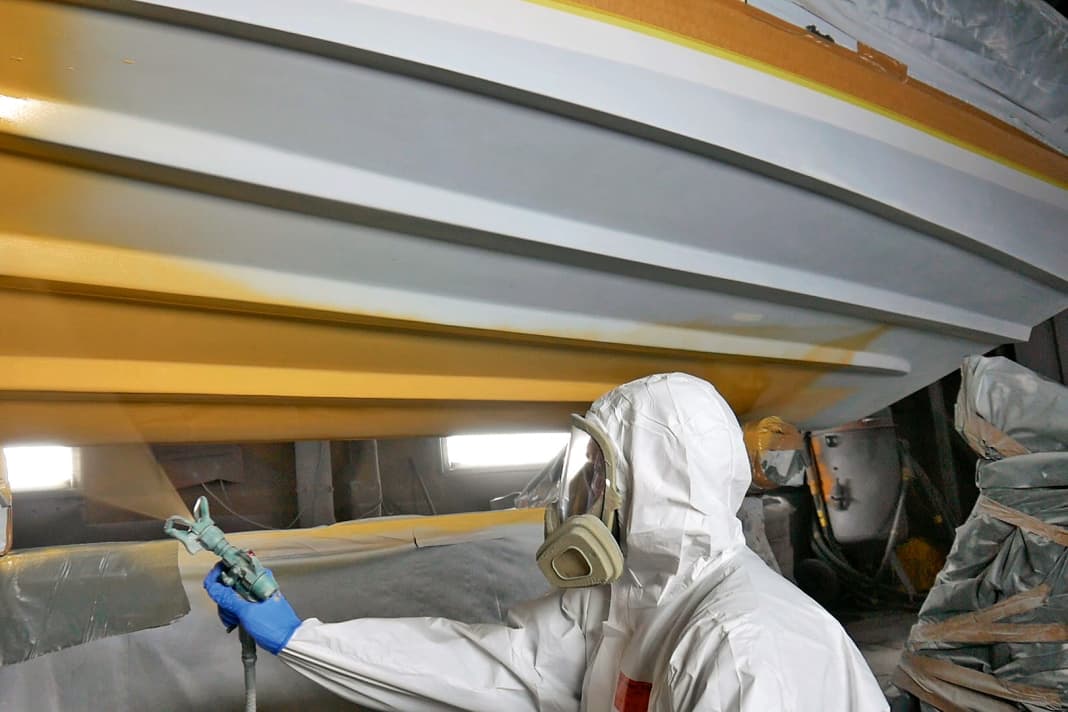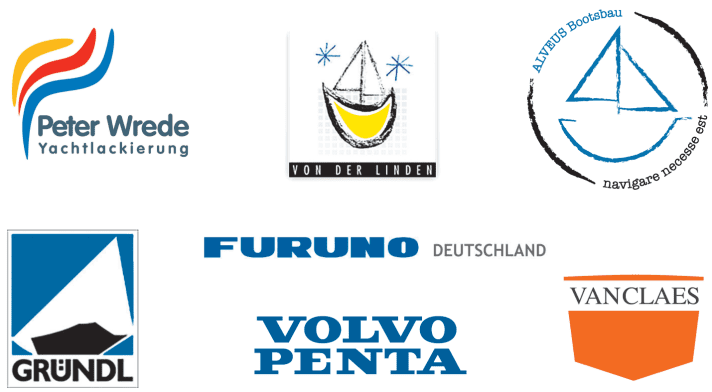





All episodes of the refit project:
- Part 1: Stocktaking
- Part 2: Replacing the rear view mirror
- Part 3: The underwater hull
- Part 4: GRP repairs
- Part 5: Antifouling coating
- Part 6: The motor foundation
- Part 7: The stringer system
- Part 8: The new engine
- Part 9: The new tank
- Part 10: The interior fittings
- Part 11: The interior work continues
- Part 12: The side panelling
- Part 13: Surface treatment and colour
What do an oil tanker almost 400 metres long and our Conquest have in common? The answer: they both need an effective antifouling coating. If fouling builds up on the underwater hull, both sail with the handbrake on. And that makes them slow and costs fuel. Antifouling coatings should and can prevent the unwanted colonisation of organisms (fouling) such as algae, mussels and the like. They are available in many different basic variants and colours to suit the type of boat and sailing area.
Our patient is now waiting for the painter. We have repaired all the GRP damage, everything has been levelled and sanded, the gelcoat completely renewed and an epoxy coating applied. To summarise: the work carried out in the first four parts of our refit series has restored the boat's substance.
Now we also want to protect the underwater hull against fouling. To do this, we need to find an antifouling solution and apply it to the boat. Together with the refit specialists from Wrede, we decided in favour of a long-term solution with an indicator. In any case, it is important to perfectly combine the existing two-component system (gelcoat) with the new one-component system of the antifouling paint.
Many passes to apply the antifouling
As already described in part 4 the epoxy coating is applied in six spray passes. We want to produce a "waterproof" coating and need a certain thickness (350 micrometres). To achieve this with a brush or roller, it takes twelve to 15 passes. In the next step, the coating is annealed at 40 degrees for twelve hours.
After the drying period, we apply an antifouling primer to ensure an optimum bond with the epoxy substrate. This is followed by the green indicator coat and finally the antifouling coat in dark grey. Both on a self-polishing basis. This means that the outer, dark grey layer slowly polishes down as the boat passes through the water. If the indicator appears, these areas can be partially touched up.
In plain language: we have longer service lives. In other words, the paintwork does not have to be completely renewed every year. In autumn, a thorough wash with a high-pressure cleaner and minor touch-ups are enough to prepare the boat for the coming season. This is not just a good thing for trailer captains whose boats are lying low on the trailer.
Video of the refit project
The BOOTE Refit project is supported by

